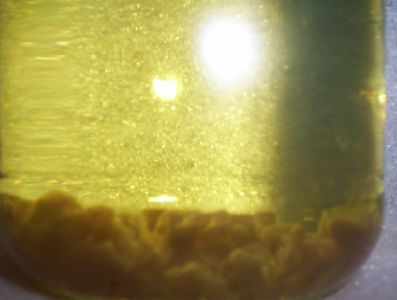I have a Chrysler DRB2 and a DRB3 scanner for my personal vehicles but they're expensive. I got a good deal by going through the parts department at the dealership I used to work at. The DRB2 only works on Chrysler vehicles up to 1995 and you need various cartridges, depending on the model you''re working on.
The DRB3 works on 1996 and newer models, but with an extra plug-in card, it can work on all Chrysler models back to 1983. With a different card, it will do emissions-related testing on any brand of car sold in the U.S. Starting with '96 models. For that reason a lot of independent shops bought them. 2004 was the first year they were obsolete for the Dakota and Durango. They worked on the other models so it should work on your van. If I remember correctly, it still worked on some Jeep models up to 2007.
You may find one of these at an auction for a dealership or independent repair shop going out of business. There's always some on eBay too. There are a number of aftermarket scanners also available. The problem is they never do as much on a given car model as the dealer's original equipment, but what they do, they do on more brands and models than dealer-specific scanners. Genysis is a common brand. Snapon has a number of models, but they are very proud of their stuff and charge accordingly. It is also very expensive to update their equipment every year. MAC and Matco Tools have their own versions that are built by other companies. I've never used them so I don't know what they will or will not do.
I have a "Monitor 4000" too made by OTC. Chrysler's DRB2 was also made by OTC. These two scanners look almost identical, but you only need one cartridge with the Monitor 4000 to work on Chrysler, GM, and Ford products. My cartridges work up to 1995. I never looked into whether there are cartridges for newer models.
Don't be fooled by the cheaper tools. A professional scanner will cost well over a thousand dollars, and typically over $5000.00. If you find something for less than a hundred dollars, that is a simple fault code reader. There are even some that are called "scanners" because they do provide sensor readings, but scanners do WAY more things than do code readers. One problem I found with the hundred-dollars units is they take sensor readings, display three or four at a time, then take up to five seconds to update and show the next "current" readings. All you can see is if a reading is totally wrong. That is much too slow to catch an intermittent problem. If you're going to waste your money on one of these, be advised the sensor data is little more than useless, and for reading diagnostic fault codes, Chrysler makes doing that yourself much easier than any other manufacturer in the world. You simply cycle the ignition switch from "off" to "run" three times within five seconds, leave it in "run", then watch the code numbers appear in the odometer display.
Professional scanners will display from eight to a dozen sensor values on one screen, and they'll update multiple times per second. That makes them much better for finding momentary glitches in sensor signals. Even that can be too slow for some sensors, so you have to rely on the computers to detect those things that take just a few milliseconds. You'll know that by reading the diagnostic fault codes. Most scanners also have a "record" feature that allows you to record a few seconds of sensor data while on a test drive. You press the "record" button when the intermittent problem occurs, then you can play it back slowly later to see what changed. Because the data goes through the scanner's memory, the recording actually starts a couple of seconds before you pressed the button.
The other thing that sets scanners worlds apart from code readers is they're "bidirectional", meaning you get information from all of the dozens of computers on the vehicle, AND you can command them to do things so you can test various circuits and systems. For example, if you have a dead electric radiator fan, you can command the Engine Computer to cycle the fan relay on and off about once per second. While that is happening, you can take voltage readings in the circuit to narrow down the location of a break in the circuit.
Code readers only read fault codes in the Engine Computer. You need a scanner to make the Anti-lock Brake Computer open some of the valves in the hydraulic controller so you can bleed air out of it when bleeding the brakes. If you change tire size, (not recommended), you need a scanner to reprogram that information so the speedometer will read correctly. Scanners are used to change customer preferences in the Body Computer. You might want to turn on or off the speed-sensitive automatic door locks or disable the horn chirp when you lock the doors with the remote. Going way back to 1993, I need my scanner to program additional key fobs for my Dynasty. Scanners won't let you deploy an air bag, but they will read the fault codes in that computer, and display related data, like road speed, transmission gear, and brake light switch.
If you've never used a scanner before, you might check at the local auto parts stores to see if they have one you can borrow. Many of them rent or borrow tools. You can spend all afternoon playing with one to see all the things you can do. You also might do a search for "OTC", (Owattona Tool Company). They used to have a web site where you could buy a DRB3 with case and all the cables. I had to buy the plug-in cards separately, of which there are five or six. Those used to cost $440.00 each, but you wouldn't need any of them for your van. There's also an accessory kit with four pressure sensors for working on computer-controlled transmissions.
Wednesday, September 7th, 2016 AT 9:20 PM

